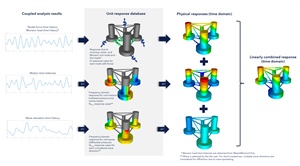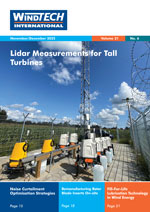 DNV has released three time-domain methods for assessing the structural performance of floating offshore wind turbines. Available in the Sesam software suite, the methods simulate turbine response to wind and wave forces in demanding offshore conditions.
DNV has released three time-domain methods for assessing the structural performance of floating offshore wind turbines. Available in the Sesam software suite, the methods simulate turbine response to wind and wave forces in demanding offshore conditions.
Structural analysis of floating turbines is complex, as combined wind and wave loads must be represented using large and detailed models. Time-domain analysis is often required to capture how a structure behaves under changing forces, but it can require significant computing time, even on advanced systems. By modelling movement and loads at each time step, engineers can predict performance more accurately, identify potential issues, and support the design of stable and reliable systems.
The new approaches are integrated into Sesam, supporting design, optimisation and structural assessment across the lifecycle of offshore assets:
- Direct Load Generation calculates the hydrodynamic pressure field on the structure and carries out dynamic or quasistatic time-domain analysis.
- Load Reconstruction applies pre-calculated pressure transfer functions to rebuild hydrodynamic pressure on the hull before running time-domain structural analysis.
- Response Reconstruction determines the structural response directly from response transfer functions, without explicit load calculations or traditional finite-element analysis.










